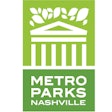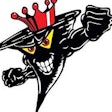
In January, dozens of visitors complained of feeling sick after attending a basketball game at Roby High School gymnasium in Texas. Administrators went so far as to have the bleachers removed and tested for chemical residue before uncovering the culprit a couple of weeks later: a broken light bulb over the visitors' bleachers emitting UV radiation.
Later that month, an errant soccer ball hit a sprinkler head at the University of Iowa's Campus Recreation and Wellness Center, flooding the MAC gym with 600 gallons of water. Weeks later, the gym was still closed while administrators waited for the floor to dry out and the extent of the damage could be assessed.
A gymnasium is a high-activity environment, and while most of the components found within are designed to live up to the abuse of its users, overlooking the few vulnerable elements can prove costly for gym operators.
LIGHTS
Schelde Sports offers a range of gymnasium components and sport-specific equipment, but the only product it sells that requires special protection is its fluorescent lighting, says Jim Patterson, president of the Grand Rapids, Mich.-based company. "Just a few years ago, there was a revolution in fluorescent lighting. Modern fluorescent technology is far superior to the older fluorescent bulbs. They're much more efficient, but they can still be broken. You need a grill or protective cage over the lights."
Though more vulnerable, breaking a florescent bulb won't have quite the same ramifications as breaking a metal halide bulb. Metal halide fixtures were the standard in gym lighting for years, and it was a metal halide fixture that broke and caused the UV radiation exposure at Roby gymnasium.
The risk of metal halide bulbs has been known for more than a decade, but a similar incident that sickened more than 100 gym users last year prompted the FDA to release a statement warning schools and other indoor facilities of the potential danger broken bulbs can create. To minimize the risk, the FDA recommended replacing open or wire-grid fixtures with fully enclosed fixtures, or replacing non-self extinguishing type R bulbs with type T bulbs, which will automatically turn off if damage occurs. Following the incident in January, administrators in Roby replaced all of the gym's type R bulbs — a temporary fix as school administrators push for a complete replacement of the gymnasium lighting with LED technology.
LED light fixtures are quickly becoming a favorite for athletic facilities seeking to upgrade their lighting, Patterson says. Not only do they offer significant energy savings over metal halide, but they are more durable than florescent lights. "They don't require a cage because the way they're made and put inside the fixture, they aren't as vulnerable," he says. "Both florescent and LED bulbs will save money, but LEDs don't require servicing for 10 years — you don't have to climb up to replace dead bulbs."
SCOREBOARDS
Durability is a top priority in scoreboard design. "With proper design, damage doesn't happen very often," says Chris Westerman, a production manager with Sioux Falls, S.D.-based Daktronics, noting the Tuff Sport design incorporated into the company's products. "We build to protect a scoreboard from any typically played indoor sport," he says. "The main thing is that it can withstand an air-filled ball at 40 miles per hour."
Today's scoreboards are designed to withstand a great deal, but they aren't impenetrable, especially when it comes to the imaginations of teenagers, who may be tempted to test out a scoreboard's durability. "Any athletic director I talk to says, 'Hey, our kids don't do that,' but we were all kids once," Westerman says. And thus it might be a good idea — if for no other reason than to discourage immature behavior — to have protective nets or screens for scoreboards and other electronic components.
"Hard balls can damage anything," Westerman warns. "Protect against them. If you're holding indoor baseball or softball practice, we recommend a protective screen to cover the scoreboard."
One option is a metal screen that can be put in place without inhibiting the view of the scoreboard. Such an option is less effective when it comes to video and message boards, though. "Netting can detract from the view of a video display or message center, because of the number of LEDs that are in the base," explains Westerman. "It doesn't detract as much from a scoreboard.
"In basketball facilities, we recommend working with a netting company to add a retractable net, something that raises and lowers," Westerman adds. An operable system allows the nets to be in place during more chaotic activities, like athletic practices or physical education classes, but then removed during events.
SPRINKLER HEADS
A broken sprinkler head is a nightmare for any facility operator, capable of causing hundreds of thousands of dollars in damage and disrupting facility usage for weeks. While the National Fire Protection Association standards call for guards in areas where sprinkler heads are at risk of damage, not all protectors are built for the gym environment. It's a fact Matt Hunsberger, president of Mishawaka, Ind.-based SprinkGUARD, knows all too well. In 2009, Hunsberger was the new head women's basketball coach at Holy Cross College in Indiana when an errant soccer ball set off a sprinkler head and flooded the school's recently opened gymnasium. "It was awful," says Hunsberger. "I was trying to recruit a brand-new basketball team, but we didn't have anything to offer."
SprinkGUARD was created a short time later, designed specifically to withstand the perils of a gymnasium environment. "It's strong, but not very heavy. It weighs just over a pound," says Hunsberger. "The majority of our product line lowers down right over the sprinkler head — you lower it on and bolt it. The most time spent is getting in a lift and getting up to the sprinkler head."
Sprinkler guards can be included in new construction — something Hunsberger hopes will become more common — but they can also be easily retrofitted into existing sprinkler systems, in most cases. The MAC gym incident at the University of Iowa is a case in point. "The rec center had one of our guards on it, but it wasn't a basic guard," says Hunsberger. The design required a custom-built protector, which was made to specifications provided by the school's engineers and not those recommended by the manufacturer. Despite the setback, Iowa is continuing its efforts to protect all of its facility's sprinkler systems. "Rec centers aren't cheap and neither are gym floors," Hunsberger says. "A normal gym has maybe 75 sprinkler heads. At about $20 a piece, that's $1,500. A gym floor is $80,000 to $100,000 to replace."
This article originally appeared in the April 2015 issue of Athletic Business with the title "Out Of Order."





































